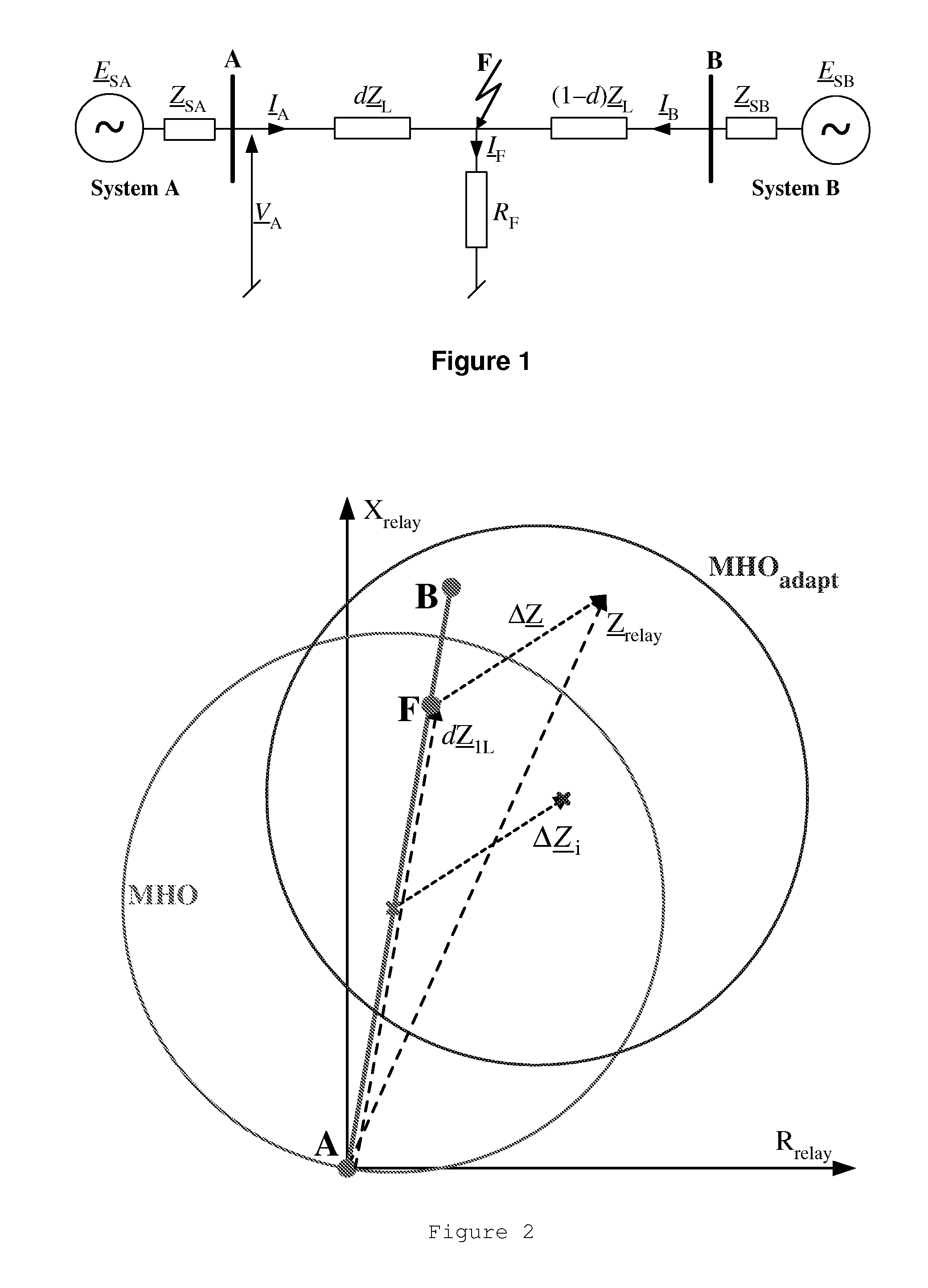Method and adaptive distance protection relay for power transmission lines
a technology of power transmission line and relay, which is applied in the direction of short-circuit testing, fault location, instruments, etc., can solve the problems of inability to accurately consider the compensation of the remote end infeed effect, the method is simplified, and the difficulty of on-line application of protective relaying
- Summary
- Abstract
- Description
- Claims
- Application Information
AI Technical Summary
Benefits of technology
Problems solved by technology
Method used
Image
Examples
Embodiment Construction
Remote End Infeed Influence on Distance Relay Operation
[0039]The following explanations relate to the relay A, arranged at the respective position A in the transmission line depicted in FIG. 1.
[0040]According to standard typical distance protection, a fault loop impedance Zrelay is determined from a fault loop voltage Vrelay and a fault loop current Irelay, both composed, according to the current fault type, of measurements of phase voltages or currents, respectively, taken by relay A (see Table 1):
Z_relay=V_relayI_relay=Rrelay+jXrelay(1)
TABLE 1Composition of relaying signals for different fault typesFault typeRelaying voltage, currentph-gVrelay = Vph,Irelay = Iph + k0I0 + k0mIparallel—0ph1-ph2, ph1-ph2-g,Vrelay = Vph1 −Vph2,ph1-ph2-ph3, ph1-ph2-ph3-gIrelay = Iph1 −Iph2where ph, ph1, ph2, g are subscripts for indicating faulted phasesor ground, respectively;I0, Iparallel—0 are the zero sequence current of the faulted or thehealthy parallel line, respectively;k_0=Z_0L-Z_1LZ_1L;k_0m=Z...
PUM
 Login to View More
Login to View More Abstract
Description
Claims
Application Information
 Login to View More
Login to View More - R&D
- Intellectual Property
- Life Sciences
- Materials
- Tech Scout
- Unparalleled Data Quality
- Higher Quality Content
- 60% Fewer Hallucinations
Browse by: Latest US Patents, China's latest patents, Technical Efficacy Thesaurus, Application Domain, Technology Topic, Popular Technical Reports.
© 2025 PatSnap. All rights reserved.Legal|Privacy policy|Modern Slavery Act Transparency Statement|Sitemap|About US| Contact US: help@patsnap.com



